We need your consent to load content.
In order to show videos we use the services of third-party providers. These providers can collect data about your activities. Further details can be found under “Learn more”.
We need your consent to load content.
In order to show videos we use the services of third-party providers. These providers can collect data about your activities. Further details can be found under “Learn more”.
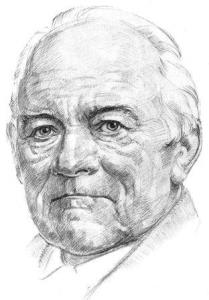 Company founder Louis Schuler
Company founder Louis SchulerThe secret of the Schuler's success has been our willingness to embark on new paths. It has taken many phases of change to transform the organization from the small metalworking shop of the past to today’s global player in forming technology.
Even the company founder had to face this challenge. Aside from fruit mills and cider presses, Schuler also manufactures fire engines. Despite his initial success with these products, Schuler fears that he has taken on too many projects at the same time. But Louis Schuler was ready for radical changes, thereby forcing himself to direct his undivided attention to sheet metal working machines and other machine tools.
Nothing is as constant as change. How Schuler faces up to this changing framework is described in our guiding principles But first, follow us through the meanwhile 180-year history of the company.
Louis Schuler (1814–1890) opens a metalworking shop in Göppingen with an apprentice in October.
In 1852, spurred on by the 1851 World’s Fair in London, Schuler starts building machines for processing sheet metal, such as spindle presses and circular shears. Aside from fruit mills and cider presses, Schuler also manufactures fire engines in the 1860s. Despite his initial success with these products, Schuler fears that he has taken on too many projects at the same time. Using an axe, he destroys all of his existing models, thereby forcing himself to direct his undivided attention to sheet metal working machines and other machine tools.
Schuler delivers the first coin minting presses to China in 1895.
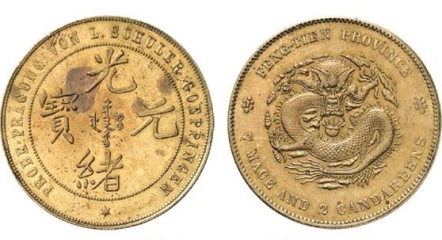
At the World’s Fair in Paris, Schuler presents the world’s first mechanical multistation press with electrical direct drive. The revolutionary new press marks the first time that all steps for producing a part are combined on a single machine: The sheet metal is automatically transported from station to station, gradually being formed into its final shape along the way.
The first Schuler body panel press is delivered to Adam Opel AG. The mass production of body panel blanks in the automotive industry opens up new sales markets for Schuler in the 1920s.
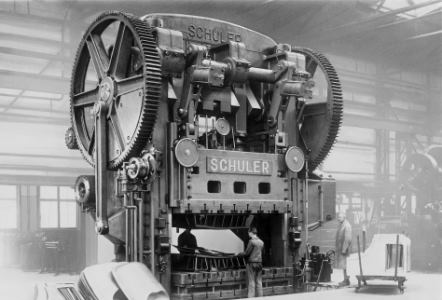
Schuler introduces the first CAD systems. Computers gradually replace the classic drawing board, which had previously been used to design the presses on paper. In those days, design engineers worked in the drafting room and their white coat was considered a status symbol.
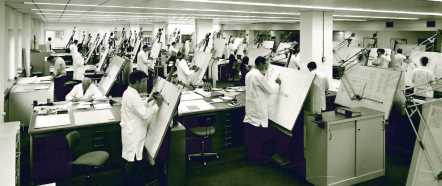
The first fully-automated transfer press for large parts, featuring a three-axis transfer and programmable logic controller (PLC), goes into operation at the Ford plant in Cologne. The system delivers a total nominal press force of 28 000 kilonewtons. Among other things, the PLC controls the die change and fault indication functions, along with the connection to other system components. It represents another milestone on the path to digitalization.
The first crossbar transfer press is placed into operation at Peugeot in Mulhouse, France. The five-stage system features a total nominal press force of 52 000 kilonewtons. The suction bar automation of large-part transfer presses in high-volume automotive production enables a massive technological leap forward. The sheet metal pieces are pulled onto suction arms and transported from die to die with stops in between.
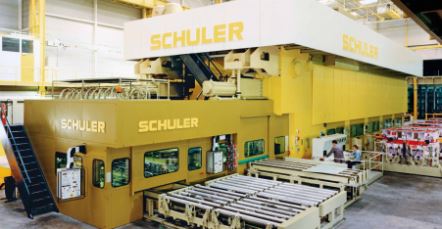
Schuler opens a new chapter in forming history with our ServoDirect Technology. This innovative drive technology makes it possible to adapt slide movements to the forming process, the die and the parts transport - for each individual component. 2012 brings a product enhancement in the form of the TwinServo technology (TST), a new drive concept with two decentralized servo motors in the press bed.
Schuler develops the Laser Blanking Line. Instead of cutting blanks with dies, the new system uses a laser beam to cut blanks right from the sheet metal coil. Schuler also becomes part of the Austrian ANDRITZ Group.
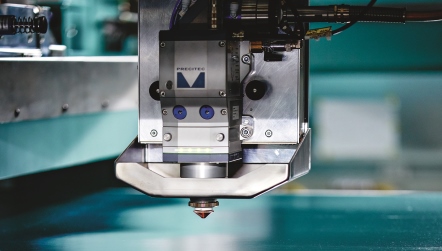
With the Smart Press Shop, Schuler is presenting its answer to Industry 4.0. This is the basis for the fully networked press shop of the future.
Today Schuler is increasingly concerned with the design of digital value-added services for its customers. Custom applications, such as the Digital Twin, arise and enable computer-aided simulation of equipment or virtual commissioning with the goal of increasing efficiency during operation and maintenance. Cloud-based solutions allow to store, analyze and provide machine and process data for further processing.
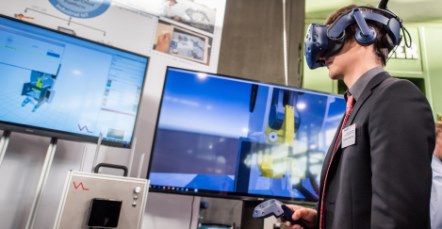
Schuler is ready for the future. True to the motto: Forming the Future
Schuler acquires the Italian machine manufacturer Sovema Group (heute: ANDRITZ SOVEMA S.P.A.) and aims to become a system supplier in battery cell production for the automotive industry and other sectors.
ANDRITZ Schuler offers customized first-rate technology in all areas of forming – from the networked press to press shop planning.